GrabCAD

Brake Caliper
by GrabCAD
Last crawled date: 2 years ago
Brake Caliper - Reducing Automobile Greenhouse Gas Emissions using Generative Design Process and Additive Manufacturing.
Designer: Samir Mulgaonkar
Advisor: Dr. Sagil James
School: California State University, Fullerton
3D Printing Method: SLS
Material: Cast Iron
The buildup of carbon dioxide and other Greenhouse gases (GHG) like methane and hydrofluorocarbons is causing the Earth’s atmosphere to warm, resulting in changes to the climate we are already starting to see today. In 2016, emissions from the transportation sector surpassed those from power plants in the U.S, making it the largest contributor to GHG. The International Energy Agency (IEA) estimates that global transport emissions should be reduced by more than 34 % of current levels by 2050 to limit the global increase in average temperature to 2°C.
The goal of this redesign is to identify the possibility of GHG reduction from automobiles through an innovative approach of combining Generative Design and Additive Manufacturing. The Brake Caliper is designed to improvise the braking system, and it is aimed at reducing the weight of the brake caliper assembly as compared to the ones available in the market.
The resultant caliper is tested in Finite Element Analysis (FEA) for pressure and loads on the caliper and its effect on the motion of the vehicle, and the results are studied for the displacements/deformations and stresses on the caliper. The results show a weight reduction of 42% compared to the commercially available calipers of the same class. Analysis has also demonstrated low-stress levels in the final design. The study found out that reducing the mass from 7.4 lbs (3.35 kg) to 4.50 lbs (2 kg) leads to higher fuel efficiency, which is advantageous from an environmental perspective and results in the reduction of GHG. The technology can be applied in the aerospace, as well as other industries where weight plays a significant role, which will significantly reduce GHG worldwide, and tremendous improvement can be made from environmental and economic perspectives.
Process: I first bought the brake caliper from the market so I can measure the weight and get exact dimensions. Fusion 360 is used to design the model and then the generative design is used to develop organic structure. The exported model from Generative design is further modified so that it can properly perform the braking application. More than 40 different constraints have been tried over a period of 100 hours during the Generative stage. The model is printed using SLS 3D printing technology using Cast Iron. However, other materials such as Titanium can be used which will further reduce the final weight of the brake caliper.
Designer: Samir Mulgaonkar
Advisor: Dr. Sagil James
School: California State University, Fullerton
3D Printing Method: SLS
Material: Cast Iron
The buildup of carbon dioxide and other Greenhouse gases (GHG) like methane and hydrofluorocarbons is causing the Earth’s atmosphere to warm, resulting in changes to the climate we are already starting to see today. In 2016, emissions from the transportation sector surpassed those from power plants in the U.S, making it the largest contributor to GHG. The International Energy Agency (IEA) estimates that global transport emissions should be reduced by more than 34 % of current levels by 2050 to limit the global increase in average temperature to 2°C.
The goal of this redesign is to identify the possibility of GHG reduction from automobiles through an innovative approach of combining Generative Design and Additive Manufacturing. The Brake Caliper is designed to improvise the braking system, and it is aimed at reducing the weight of the brake caliper assembly as compared to the ones available in the market.
The resultant caliper is tested in Finite Element Analysis (FEA) for pressure and loads on the caliper and its effect on the motion of the vehicle, and the results are studied for the displacements/deformations and stresses on the caliper. The results show a weight reduction of 42% compared to the commercially available calipers of the same class. Analysis has also demonstrated low-stress levels in the final design. The study found out that reducing the mass from 7.4 lbs (3.35 kg) to 4.50 lbs (2 kg) leads to higher fuel efficiency, which is advantageous from an environmental perspective and results in the reduction of GHG. The technology can be applied in the aerospace, as well as other industries where weight plays a significant role, which will significantly reduce GHG worldwide, and tremendous improvement can be made from environmental and economic perspectives.
Process: I first bought the brake caliper from the market so I can measure the weight and get exact dimensions. Fusion 360 is used to design the model and then the generative design is used to develop organic structure. The exported model from Generative design is further modified so that it can properly perform the braking application. More than 40 different constraints have been tried over a period of 100 hours during the Generative stage. The model is printed using SLS 3D printing technology using Cast Iron. However, other materials such as Titanium can be used which will further reduce the final weight of the brake caliper.
Similar models
grabcad
free

Motorcrycle Model with Generative Design Technology
...aterial : aluminium 7075
course link: https://www.coursera.org/learn/generative-design-performance-weight-reduction/home/welcome
grabcad
free

Automobile Disc Brake System
...here, down to the brake bleeder. except the brake booster. this is all about precision.
no stress analysis was performed though.
grabcad
free

caliper stress analysis
...caliper stress analysis
grabcad
caliper stress analysis in ansys16
grabcad
free

Lightweight bracket (v3)
...ical load: 829 mpa
horizontal load 697 mpa
42 ° load 762 mpa
torque 517 mpa
grabcad
free

DISC BRAKE FINITE ELEMENT ANALYSIS
...nite element analysis
grabcad
the present study can provide a useful design tool and improve the brake performance of disc brake
grabcad
free

Brake Pedal stress Analysis in Catia
...brake pedal stress analysis in catia
grabcad
vehicle brake pedal stress analysis in catia
grabcad
free

study of stress analysis in fishplate
...study of stress analysis in fishplate
grabcad
it was designed to analyse the stresses in fishpate
grabcad
free

Battery Rack
...e cost as far as possible.
the result is this model. stress analysis shows the structure is sturdy enough to take battery weight.
grabcad
free

study analysis
...study analysis
grabcad
study analysis diplacement, stress, and flow analysis.
cg_trader
$2

Outdoor table from recycled tires
...les in nature and also not stressful for the computer while working with it. basic colors can be changed at the table and chairs.
Caliper
turbosquid
$7
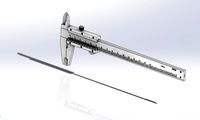
CALIPER
...
royalty free 3d model caliper for download as stl and sldas on turbosquid: 3d models for games, architecture, videos. (1249938)
3d_export
$5

caliper
...caliper
3dexport
turbosquid
$15

Caliper
...ree 3d model caliper for download as blend, obj, fbx, and dae on turbosquid: 3d models for games, architecture, videos. (1653770)
turbosquid
$79
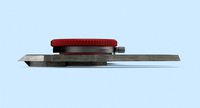
Caliper
... available on turbo squid, the world's leading provider of digital 3d models for visualization, films, television, and games.
turbosquid
$20
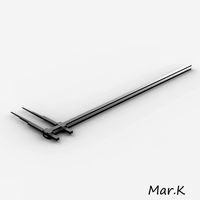
Caliper
... available on turbo squid, the world's leading provider of digital 3d models for visualization, films, television, and games.
3d_export
$15
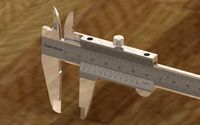
Caliper 3D Model
...caliper 3d model
3dexport
caliper paquimetro dimension dimens??o
caliper 3d model tlsurf 21469 3dexport
turbosquid
$5
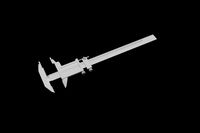
Vernier Caliper
...lty free 3d model vernier caliper for download as 3ds and obj on turbosquid: 3d models for games, architecture, videos. (1604280)
turbosquid
$40
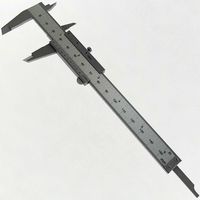
Vernier Caliper
...ee 3d model vernier caliper for download as 3ds, max, and obj on turbosquid: 3d models for games, architecture, videos. (1298113)
turbosquid
$15

Vernier caliper
... 3d model vernier caliper for download as ige, obj, and sldas on turbosquid: 3d models for games, architecture, videos. (1227110)
turbosquid
$15

Castroviejo Caliper
... castroviejo caliper for download as blend, obj, fbx, and dae on turbosquid: 3d models for games, architecture, videos. (1649701)
Brake
3d_export
$5
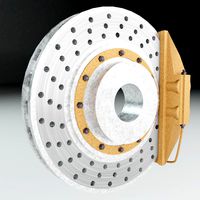
brake
...brake
3dexport
brake disk
turbosquid
$2
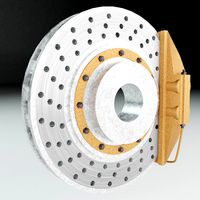
Brake
... free 3d model brake for download as blend, fbx, obj, and stl on turbosquid: 3d models for games, architecture, videos. (1600351)
turbosquid
$19

Brakes
... available on turbo squid, the world's leading provider of digital 3d models for visualization, films, television, and games.
turbosquid
$9

brake
... available on turbo squid, the world's leading provider of digital 3d models for visualization, films, television, and games.
turbosquid
$7

Brake
... available on turbo squid, the world's leading provider of digital 3d models for visualization, films, television, and games.
turbosquid
free

brake
... available on turbo squid, the world's leading provider of digital 3d models for visualization, films, television, and games.
3d_export
$5

muzzle brake
...muzzle brake
3dexport
muzzle brake for large-caliber. not a real sample.
3d_export
$22

Brakes 3D Model
...brakes 3d model
3dexport
brakes disc support ventilated caliper brake disk wheel
brakes 3d model bayazoff 30362 3dexport
3d_export
$15
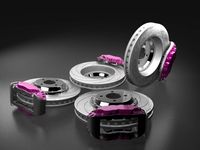
Brakes 3D Model
...brakes 3d model
3dexport
brake disk support caliper
brakes 3d model mackandco 33574 3dexport
3d_export
$10

brake-disc-brembo
...brake-disc-brembo
3dexport
brake-disc-brembo
